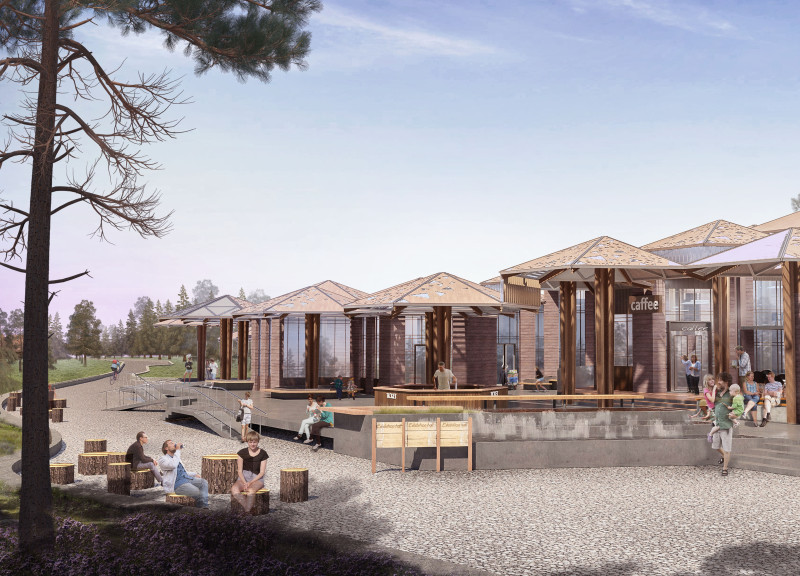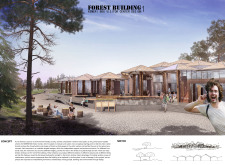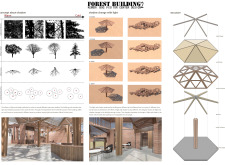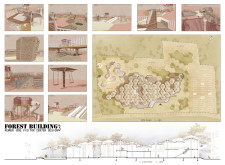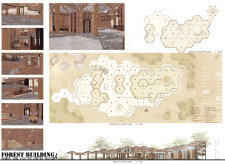5 key facts about this project
The Kemeri Bog Visitor Center represents a thoughtful integration of architecture and its natural surroundings, focusing on environmental sustainability and user engagement. This project serves as an educational hub for visitors exploring the unique ecosystem of Kemeri Bog in Latvia. With its modular design, the structure facilitates a variety of functions, including exhibition spaces, a cafe, informational kiosks, and areas for outdoor activities.
The architectural form is characterized by a series of interconnected hexagonal modules that emulate the pattern found in nature, specifically resembling tree canopies. This layout provides flexibility for different activities while maintaining a cohesive aesthetic. Each module is strategically positioned to optimize views of the bog and surrounding forest, fostering a connection between visitors and the landscape.
Innovative Design Approaches
One of the primary aspects that distinguishes this project is its focus on environmental responsiveness. The design maximizes natural light through large glass elements, creating a visual dialogue between the interior and the exterior. This transparency not only enhances the user experience but also minimizes reliance on artificial lighting, contributing to energy efficiency.
The choice of materials further underscores the project's commitment to sustainability. Wood serves as the primary material, providing warmth to the interior while seamlessly integrating with the natural environment. Complementary materials, such as concrete for the foundation and metal for structural support, enhance durability and stability while maintaining the integrity of the design.
The modular nature of the visitor center allows for individual components to be adapted or replaced as needed, providing a long-lasting solution that can evolve with the needs of the community. This approach is particularly relevant in the context of environmental education, as it allows for future adaptability in programming and usage.
Engagement with Nature
The layout of the Kemeri Bog Visitor Center encourages active engagement with nature. Outdoor spaces are designed to facilitate walking trails, seating areas, and educational exhibits, promoting interaction with the local ecosystem. The design fosters an educational atmosphere, where visitors can participate in guided tours and workshops that explore Bog-related topics and conservation efforts.
Visitors to the center can appreciate not only the architectural design but also the thoughtful integration of the building into its natural context. The project serves as a model for how architecture can harmonize with ecological systems, offering insights into sustainable practices in architectural design.
For further insights into the project, including architectural plans, architectural sections, and architectural designs, explore the comprehensive project presentation.


